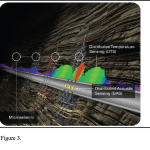During all this time of GIS evolution, Computer Aided Drawing (CAD) continued to flourish, but in a more or less parallel universe, with occasional attempts at so called GIS-CAD convergence being mostly unsuccessful. GIS systems introduced the notion of a feature as a real world object, rather than a mark on a map. This took a little longer to catch on as CAD (Computer Aided Drawing) shifted to CAD (Computer Aided Design), and as BIM was borne with IFC and CityGML as its primary encodings. Both worlds live in the land of features today.
Having got this far, this seems like a good point to try and guess how things might evolve from here.
Will GIS now go from strength to strength? Will we see engineering and construction companies shifting from engineering design software to GIS? Or will we see a continuation of these awkward architectures where things are designed in one environment and then transformed for no functional reason and stored in another environment, mostly for the purpose of visualization? Could a lighter weight, lower cost (i.e. free) presentation environment eliminate this second storage model and thus simplify the enterprise system architecture? Could there be a fundamental change brewing in the industry?
I have long harangued on the fact that most data integration projects or SDI’s have focused on the wrong target (national data), when they should be focused on cities (http://www.galdosinc.com/archives/what-is-an-sdi, http://www.galdosinc.com/archives/the-new-sdi-–-spatial-data-infrastructure). Urban data is enormously more valuable, is constantly changing, and the simple act of sharing can save hundreds of millions (even billions) of dollars each year in every country on the planet. Cities are the land of designed infrastructure (whether located inside or outside the city proper), and the critical target of SDI’s should be the integration of design data across projects, across the city, and over the life cycle of the city and its component infrastructures.
Does this require GIS as we have traditionally understood it?
Most such infrastructure is best understood in three dimensions (augmented by 2D views of course), and 2D symbolization, map drawing, and analysis (all cornerstone technologies of GIS), while not irrelevant, are clearly NOT the key technologies. The world of (3D) infrastructure is about engineering design and engineering analysis. Why translate into another storage model if you don’t need to, and if it does not provide much benefit? Can’t your BIM oriented design software provide you the 2D views when you need them? Would an engineering company seriously start designing, or making design modifications to, their infrastructure in a GIS? I don’t think so.
It is not Enterprise GIS that we should be thinking about in our cities, but Enterprise Infrastructure Model(s).
I believe that this viewpoint is underscored by the need and the increasing interest in what I would call wide area engineering. This is not engineering as understood in the discipline siloed past, but rather a form of systems engineering applied to a large area such as a major airport, a large city, or a sea port. Such engineering must not only deal with a range of conventional engineering disciplines, but must also take into account many other sciences, including ecology, biology, and aerodynamics. While there are clearly limits to modeling and simulation (the heart of all engineering) for such complex systems, it would be foolish to continue development without taking advantage of the tools and techniques that are available to us. In wide area engineering, the integration of data – design data – and simulation and modeling data from a variety of different domains and organizations is required, and on an ongoing basis. This does not really sound like the world of GIS.
Perhaps a sea-change in the industry is close at hand?






